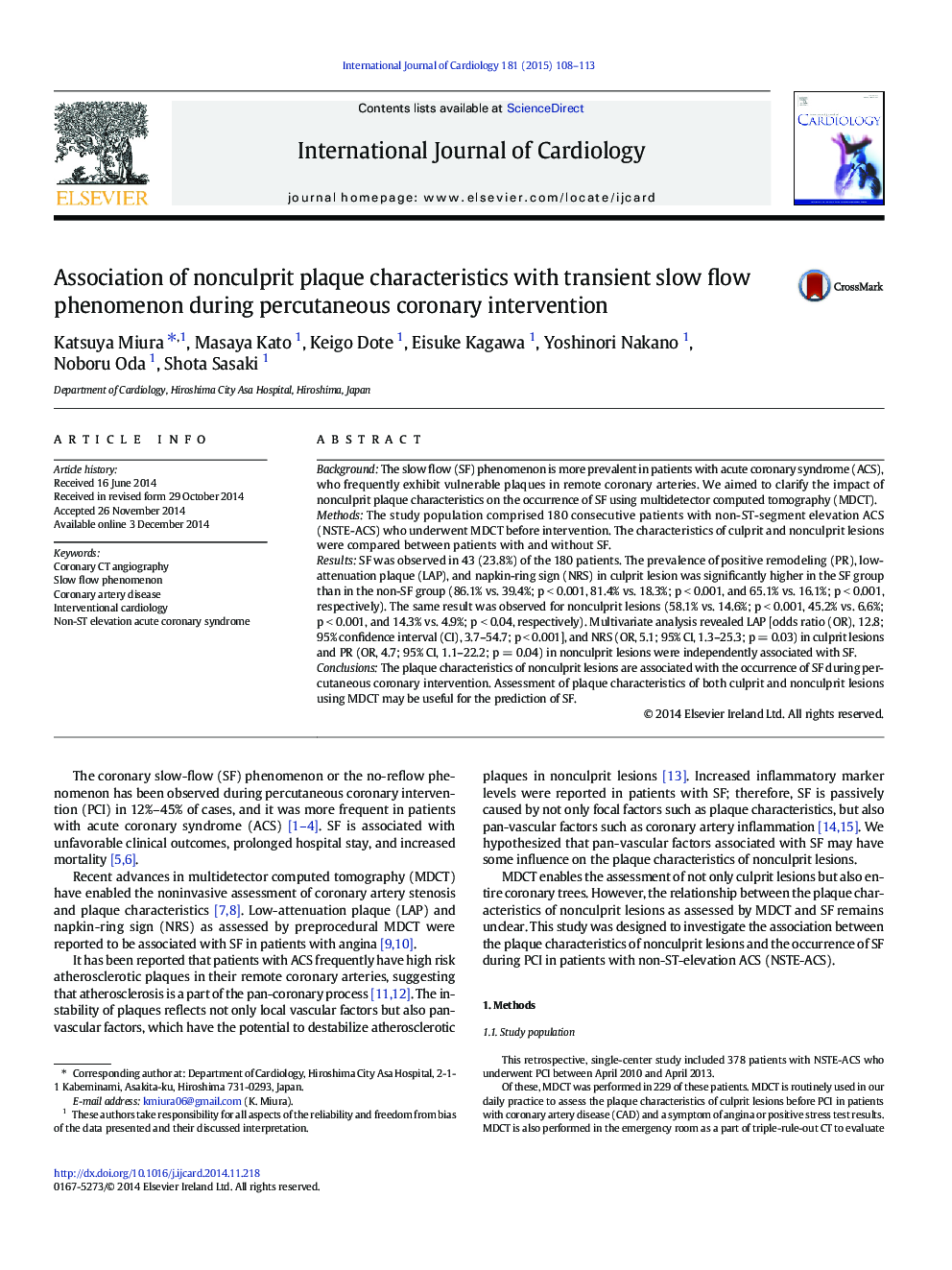| کد مقاله | کد نشریه | سال انتشار | مقاله انگلیسی | نسخه تمام متن |
|---|---|---|---|---|
| 5968512 | 1576171 | 2015 | 6 صفحه PDF | دانلود رایگان |
- The characteristics of culprit and nonculprit lesions were compared between patients with and without slow flow (SF).
- Positive remodeling (PR), low-attenuation plaque (LAP), and napkin-ring sign (NRS) in culprit lesion were more frequently observed in the SF group.
- The same result was observed for nonculprit lesions.
- Multivariate analysis revealed LAP and NRS in culprit lesions and PR in nonculprit lesion was independently associated with SF.
BackgroundThe slow flow (SF) phenomenon is more prevalent in patients with acute coronary syndrome (ACS), who frequently exhibit vulnerable plaques in remote coronary arteries. We aimed to clarify the impact of nonculprit plaque characteristics on the occurrence of SF using multidetector computed tomography (MDCT).MethodsThe study population comprised 180 consecutive patients with non-ST-segment elevation ACS (NSTE-ACS) who underwent MDCT before intervention. The characteristics of culprit and nonculprit lesions were compared between patients with and without SF.ResultsSF was observed in 43 (23.8%) of the 180 patients. The prevalence of positive remodeling (PR), low-attenuation plaque (LAP), and napkin-ring sign (NRS) in culprit lesion was significantly higher in the SF group than in the non-SF group (86.1% vs. 39.4%; p < 0.001, 81.4% vs. 18.3%; p < 0.001, and 65.1% vs. 16.1%; p < 0.001, respectively). The same result was observed for nonculprit lesions (58.1% vs. 14.6%; p < 0.001, 45.2% vs. 6.6%; p < 0.001, and 14.3% vs. 4.9%; p < 0.04, respectively). Multivariate analysis revealed LAP [odds ratio (OR), 12.8; 95% confidence interval (CI), 3.7-54.7; p < 0.001], and NRS (OR, 5.1; 95% CI, 1.3-25.3; p = 0.03) in culprit lesions and PR (OR, 4.7; 95% CI, 1.1-22.2; p = 0.04) in nonculprit lesions were independently associated with SF.ConclusionsThe plaque characteristics of nonculprit lesions are associated with the occurrence of SF during percutaneous coronary intervention. Assessment of plaque characteristics of both culprit and nonculprit lesions using MDCT may be useful for the prediction of SF.
Journal: International Journal of Cardiology - Volume 181, 15 February 2015, Pages 108-113
